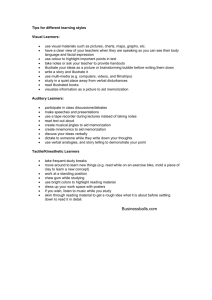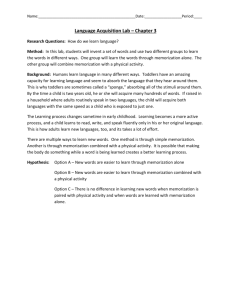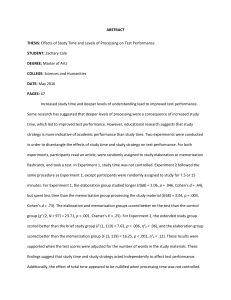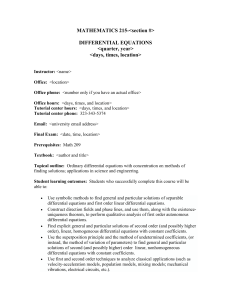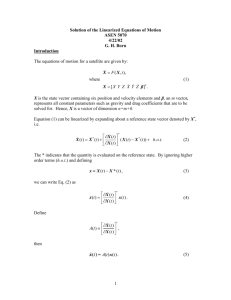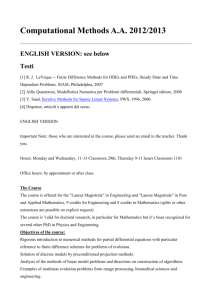Ordinary Differential Equations and Memorization
advertisement
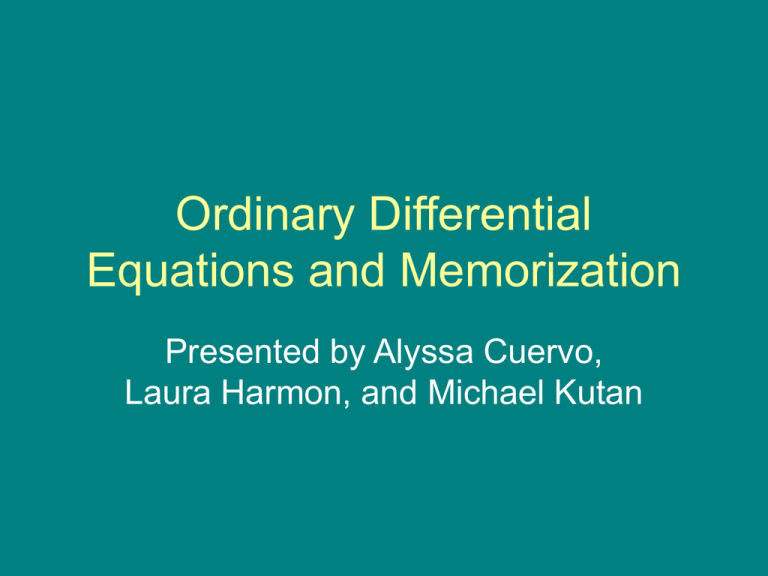
Ordinary Differential Equations and Memorization Presented by Alyssa Cuervo, Laura Harmon, and Michael Kutan The Equation • We must assume two things: – All outside variables can be combined into one constant, k – The rate of memorization is proportional to what is left to learn (with L being what is learned in fraction form) dL/dt = k (1 – L) Finding L(t) and k dL/dt = k (1 – L) … … … L(t) = 1-e-kt k = (-ln(|1-L|)/t Our Hypothesis • One’s personal k increases with longer study time • One’s personal k decreases with an increased list size The Initial Test • Three participants were asked to perform a series of memorization tasks – Participants had three lists of 20 random three-digit numbers to memorize – Participants would have 1 minute to study the 20 numbers – Participants were asked to write down whichever numbers they remember (only numbers in the correct rank were counted) – Participants would repeat the process up until 10 tries or until they have memorized the entire list correctly (when L=1) First Change: Study Time • Participants were asked to study a fourth list with 2 minutes at each study session instead of 1 • Participants were also asked to study a fifth list with 3 minutes instead Second Change: List Size • Participants were asked to study a sixth list with fifty numbers with 1 minute study sessions • Participants were also asked to study a seventh list with one hundred numbers with 1 minute study sessions Conclusion • An individual’s personal k has been found to vary due to many outside parameters • An increase in study was not found to be necessarily beneficial • An increase in list length was always detrimental the participant Reference • Blanchard, Devaney, and Hall's Differential Equations: Third Edition Thank You!

